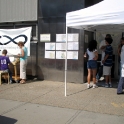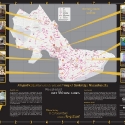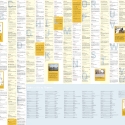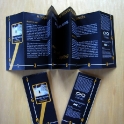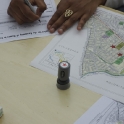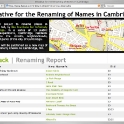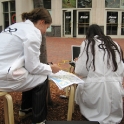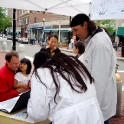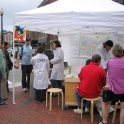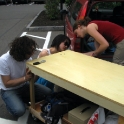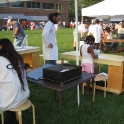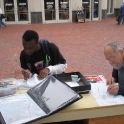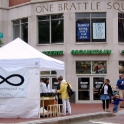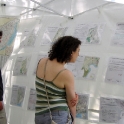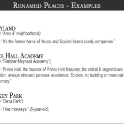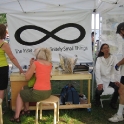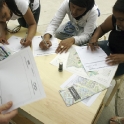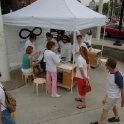What would the city look like if we could rename all of our public spaces, right now? The Institute invited members of the public to RENAME places in Cambridge, MA, for the 2008 publication of a map of “The City Formerly Known as Cambridge”.
In a series of thirteen renaming events between Spring 2006 – Summer 2007, the Institute collected over 300 new names for public spaces in Cambridge. We worked with Hedberg Maps and a senior graphic design class at the Art Institute of Boston in Spring 2008 to produce and publish the map of “The City Formerly Known As Cambridge”. The published map contains only the new names of Cambridge public spaces, along with the reasons why people renamed particular places.
Renaming reasons were various. A young man named several places after his friends because “they deserve it”. A five-year-old renamed Dana Park to Monkey Park because “I like monkeys”. People renamed neighborhoods to recall past histories (i.e. renaming Area 4 to Candyland to commemorate Necco and Squirrel candy companies). One woman renamed Harvard Street to Ann Racliffe street because, she said, Radcliffe gave all the money to found Harvard and never got any street out of it. Check out all of the new names in the Renaming Report.
Finally, we attached money to the renaming process. The first person to rename something got to do it for free. After that, the price went up by a quarter, a token amount of money to try to hint at the correlations between public memory and money.
Everyone who contributed a new name received a free copy of the map. If you are interested in a copy, email the Institute.
Related Writing:
- D’Ignazio, C. “Civic Imagination and a Useless Map”. DIY Utopia. Edited by Amber Day. Rowan and Littlefield, 2016.
- kanarinka. “The City Formerly Known as Cambridge: a useless map by the Institute for Infinitely Small Things”. Dear, Michael, et al., eds. GeoHumanities: Art, history, text at the edge of place. Routledge, 2011.

